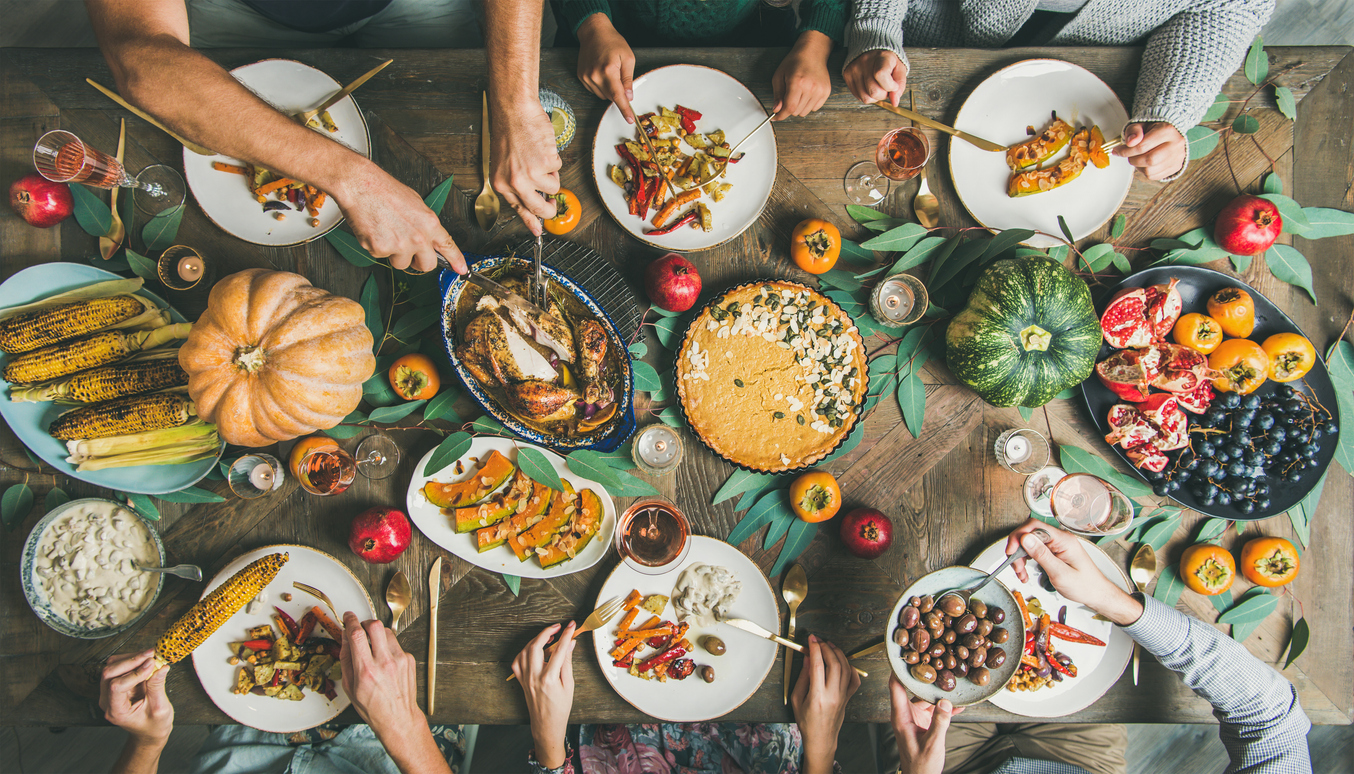Each autumn, millions of tables across America groan under the weight of Thanksgiving feasts. Yet many families now seek deeper connections to their food, their communities and the earth itself. The age-old harvest celebration offers a perfect opportunity to embrace a farm-to-table Thanksgiving (or Friendsgiving), along with sustainable practices honoring both tradition and our planet’s future.
From locally sourced turkeys to zero-waste table settings, small shifts in holiday planning create meaningful environmental impact. The key lies in thoughtful preparation: choosing regional ingredients, planning portions wisely and selecting earth-friendly serving ware. These choices not only reduce our ecological footprint, but often result in fresher, more flavorful meals that bring extra meaning to the celebration.
Celebrate Local Ingredients
The path to your Thanksgiving table likely starts weeks before the holiday, when morning frost dusts pumpkin fields and late-season apples hang heavy on orchard branches. Local farms and markets transform autumn harvests into the building blocks of more memorable meals, offering produce picked at peak ripeness and meat from responsibly raised animals. Take the time this holiday to turn these ingredients into regional specialties for a bit more meal variety at Thanksgiving.
Find Your Local Food Community
Regional farmers bring unique varieties of squash, root vegetables and heritage turkeys rarely appearing in conventional stores. Start at farmers’ markets, where growers share harvest schedules and cooking tips. Many farms now offer pre-order systems for holiday ingredients, ensuring you secure specialty items, like fresh cranberries or heirloom pumpkins. Recent advances in post-harvest technology help local farms extend their seasonal offerings, making regional sourcing increasingly practical for farm-to-table holiday meals.
Plan Your Menu Around Regional Specialties
Turn traditional recipes into celebrations of local bounty. Replace distant-shipped green beans with frost-sweetened Brussels sprouts or swap imported yams for local sweet potatoes. Consider starting a community garden for fresh sage, thyme and rosemary — essential Thanksgiving flavors that thrive in most climates. The benefits extend beyond freshness. Local sourcing cuts transportation emissions and supports neighboring farms. When you buy directly from growers, more money stays in your community.
Reduce Food Waste with Smart Planning
The scale of Thanksgiving food waste stuns: Americans throw away about 200 million pounds of turkey alone each holiday. Behind these numbers lie countless hours of farming, transportation and preparation – all lost to overambitious portions and poor planning. Yet, this holiday centered around gratitude and abundance offers the perfect moment to transform our relationship with food waste. Smart planning preserves both resources and your budget while honoring the true spirit of the harvest celebration.
Guest-Focused Portion Planning
Start with a headcount, then account for eating habits. Plan one pound of turkey per person for ample leftovers or a half pound for modest portions. Map side dishes to your guests’ preferences — perhaps less stuffing for your grain-free relatives and more vegetable options for vegetarian diners. Wild foraging foods add unique flavors while connecting meals to local ecosystems. Keep serving bowls modest; people can always return for seconds.
Creative Leftover Food Management
Transform extra leftovers into planned meals rather than afterthoughts or, worse, chucking them in the garbage. There are countless ways you can have tasty meals for the whole Thanksgiving weekend. All it takes is some planning, prep work and cooking skills.
A few ideas for this holiday include:
- Create a dedicated “scraps container” for vegetable ends during meal prep.
- Make stock immediately from the turkey carcass — don’t wait!
- Turn bread ends into croutons within 24 hours.
- Process giblets into gravy rather than trashing them.
- Compost produce scraps that can’t be repurposed.
Choose Eco-Friendly Tableware
The choice between disposable convenience and lasting quality extends beyond the menu to the table and the season itself. By swapping disposable items with reusable or compostable options, you can create a beautiful table while also being kind to the planet. This becomes more important at large Thanksgiving gatherings where the cumulative effects of saving on plastic waste become invaluable.
Sustainable Table Settings
Skip single-use plastics for enduring alternatives that gain character with each gathering. Cloth napkins in fall colors bring warmth year after year, while mismatched vintage plates from local thrift stores add charm without environmental cost. Natural Thanksgiving decor can celebrate seasonal beauty — try arrangements of local gourds, pine cones or dried wheat stems. Beeswax candles cast warm light without petroleum-based paraffin, while potted herbs double as decorations and ingredients.
Sweet Endings Without Environmental Impact
Dessert presents special opportunities for sustainable choices. Consider sugar substitutes that align with environmental values – modern alternatives match traditional sugar’s performance while reducing resource use. Serve pies on ceramic plates rather than disposable aluminum tins. Skip plastic wrap for reusable container storage. Small changes, like metal pie servers and glass storage containers, build a collection of quality tools known to improve with age.
In Summary
Thanksgiving’s roots as a harvest celebration make it a natural moment to strengthen bonds with our food, community and environment. Each eco-friendly choice, from selecting local produce to storing leftovers properly, ripples outward, influencing family habits and community practices long after the dishes are cleared.
The path toward sustainability grows more apparent with each mindful decision. Whether starting small with cloth napkins or embracing larger changes like local sourcing, every step matters. These choices craft celebrations that nourish the people around our tables and the world we share with future generations.
This Thanksgiving, celebrate all you’re thankful for by cutting waste and protecting your environment! Learn more ways to throw the most sustainable holiday ever by reading our articles and listening to our podcast.
Source link
Katie Brenneman biofriendlyplanet.com


